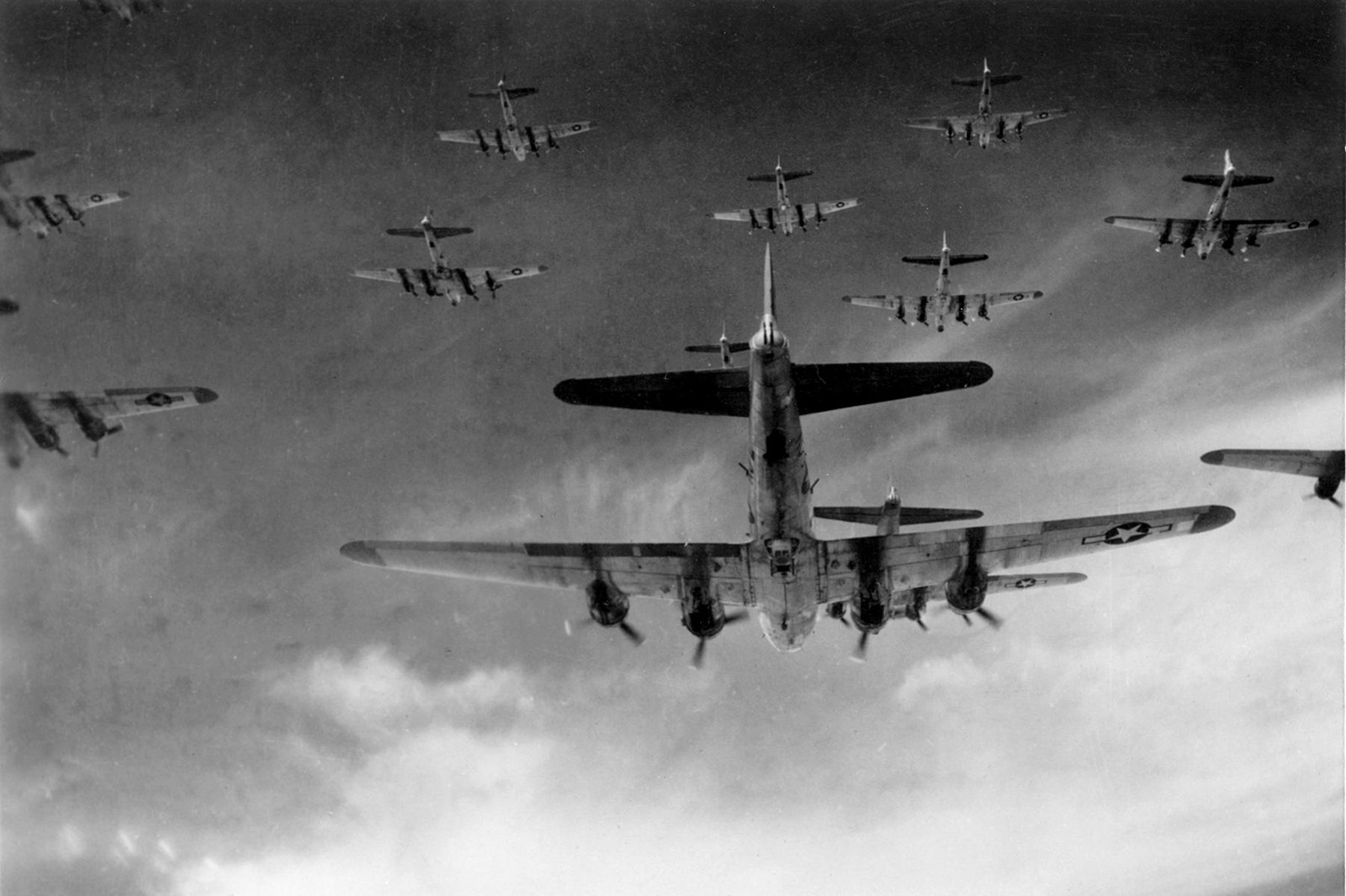
Bombers
WWI & WWII Bombers
-
De Havilland Mosquito
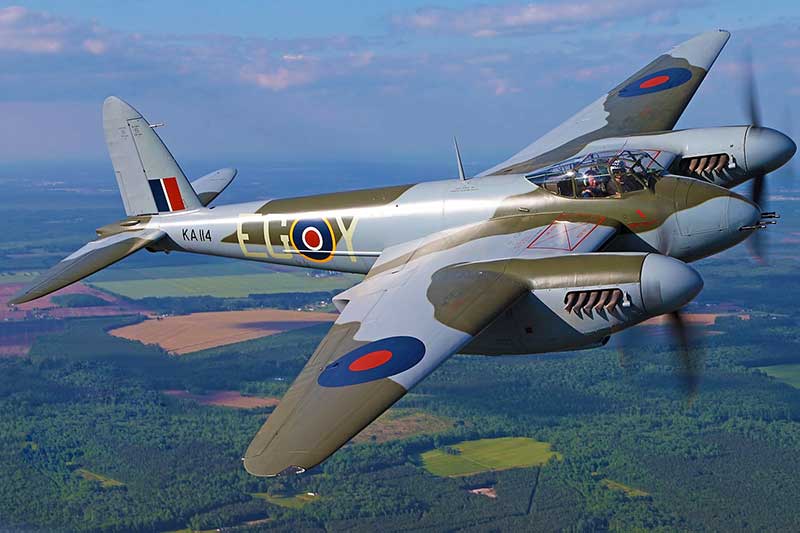
The de Havilland DH-98 Mosquito, constructed almost entirely of wood, is affectionately known as “The Wooden Wonder”. This particular airplane, number KA114, was manufactured in Canada in 1945 but never saw combat action in the Second World War. In tribute to the New Zealanders responsible for the restoration, 487 Squadron RNZAF color scheme was chosen and it was painted as EG-Y.
After being sold surplus to a farmer in Alberta, Canada in 1948, it deteriorated in a farm field until 1978 when it was acquired by a Canadian museum. The Military Aviation Museum purchased the crumbling remains in 2004 and shipped it to AVspecs in New Zealand for restoration. A major obstacle was recreating the forms needed for the new wooden fuselage, wings, and tail sections. Glyn Powell, of Auckland, had spent nearly a decade building the 36 foot long molds for the fuselage alone.
Developed as a high-speed fighter with a two-man crew, this twin-engine aircraft is powered by dual original Rolls Royce Merlin engines and equipped with four replica machine guns and 20mm cannons under the nose. The Mossie was prized for its maneuverability and speed capability of over 350 mph.
Eight years of painstaking restoration work resulted in the long-awaited first flight at Ardmore Airport in September of this year. Of approximately 30 projects and museum displays that remain, our Mossie is the only flying Mosquito in the world today.Country: Canada
Manufacturer: de Havilland
Engine: 2 x Packard Merlin 225
Horsepower: 1,620 hp
Max Speed: 366 mph
Empty Weight: 13356 lbs
Max Weight: 18649 lbs
Wing Span: 54 ft 2 in
Ceiling: 29,000 feet
Crew: Two -
B-25J “Mitchell”
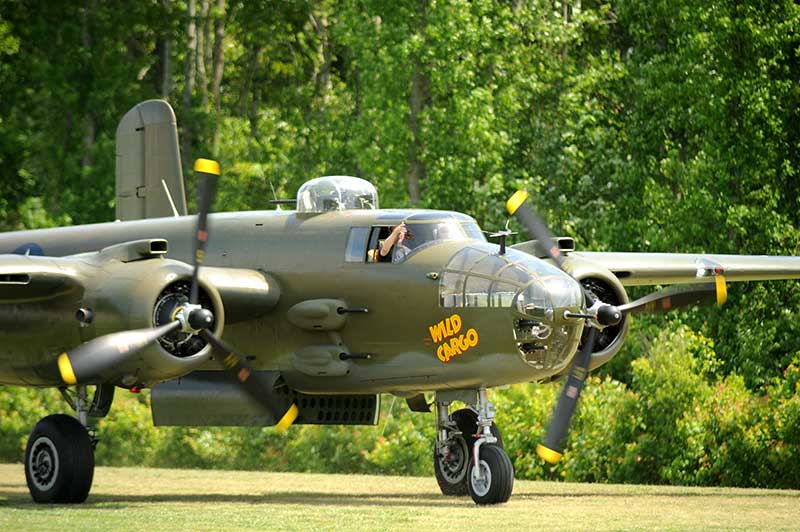
The B-25 Mitchell medium bomber was launched into history in the opening months of WWII. As the entire air bombardment concept owed itself to Gen. “Billy” Mitchell, the B-25 is the only U.S. aircraft to be named after a person.
Just four short months after Pearl Harbor, Gen. James Doolittle led a one-way raid from the decks of the carrier Hornet against the Japanese Empire with B-25’s. The emotional impact of the raid on both nations was far greater than the actual damage inflicted.
B-25’s served in all theaters of the war, and many survived the war as transports and cargo carriers. The MAM’s Mitchell was sold no less than ten times after the war for as little as $500.Country: USA
Manufacturer: N. AmericanEngine: 2-Wright R-2600
Horsepower: 1650hp each
Max Speed: 275 mph
Weight: 21,120lbs /35,510lbs
Ceiling: 25,000 feet
Wing Span: 67′ 6″Length: 52′ 11″Height: 17′ 7"
Crew: Six; two pilots, navigator/bombardier, turret gunner/engineer, radio operator/waist gunner, tail gunner -
AD-4 Skyraider
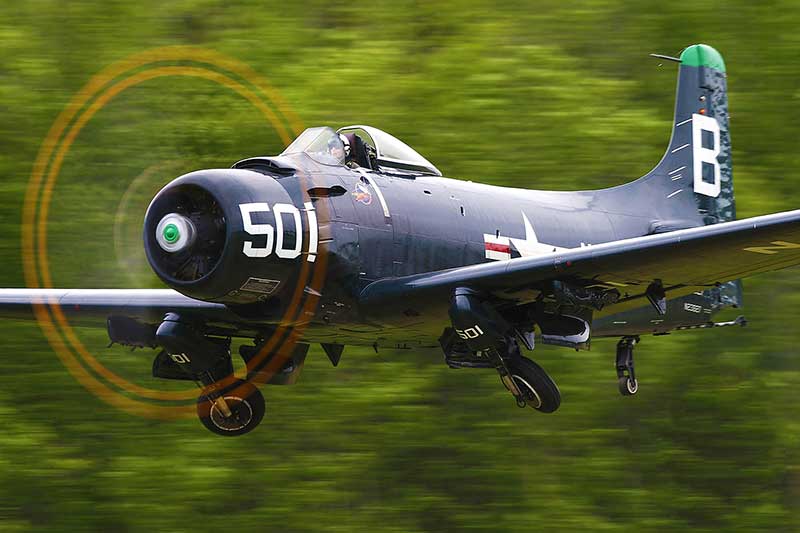
Designed as a replacement for the obsolete SBD Dauntless, the new “Dauntless II” was tested in 1945. From this initial design came the AD Skyraider. At the time, the military phonetic alphabet used “Able” and “Dog” for letters AD, and the nickname “Able Dog” stuck.
Astonishingly, more than one thousand variations were built on this airframe, including ground attack, airborne early warning, night attack, and even nuclear bomber.
The MAM’s AD was built in 1949, and saw three tours in Korea with several squadrons. It is in the livery of LCDR “Swede” Carlson, commander of what became known as the “Dam Busters” when his squadron accomplished in Korea what B-29’s could not.
Country: USA
Manufacturer: Douglas
Engine: Wright Cyclone R-3350-26WD
Horsepower: 2,800 hp
Max Speed: 213/368 mph
Weight: 12313 lbs/25,000 lbs
Ceiling: 27,500 feet
Range: 1,600 miles
Crew: One -
TBM-3E “Avenger”
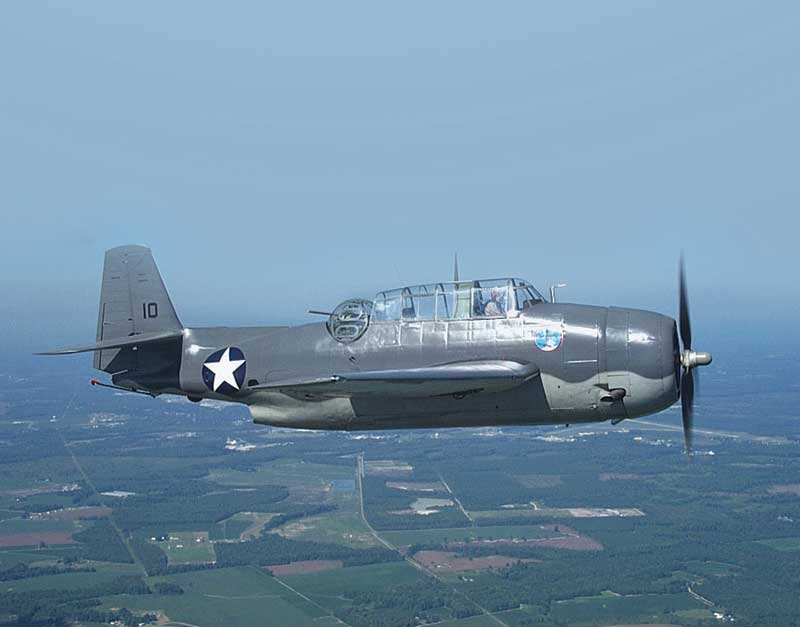
Introduced into the fleet in 1942, the Avenger torpedo bomber was designed in the late 1930’s as a replacement for the aging Douglas Devastator. The original TBF Avenger built by Grumman was also contracted out to General Motors, whose planes were designated TBM.
Former President George H.W. Bush, then the youngest naval aviator in the service, was shot down while flying an Avenger from the carrier USS San Jacinto while attacking Chi Chi Jima island, and was rescued by submarine.
MAM’s Avenger was built in 1945, and she accumulated only 1,227 hours in her eleven years of service. She saw brief duty as a fire retardant “bomber” before being acquired by MAM in 2001.
Her livery is that of Captain “Zeke” Cormier who flew combat missions from escort carriers in the North Atlantic.edium Rare is an elite author known for offering high-quality, high-value products backed by timely and personable support. Recognised and awarded by Envato on multiple occasions for producing consistently outstanding products, it's no wonder over 20,000 customers enjoy using Medium Rare templates.
Country: USA
Manufacturer: Curtiss Wright
Engine: Wright R2600-2D
Horsepower: 2,800 hp
Max Speed: 155/333 mph
Weight: 18,000 lbsCeiling: 30,100 feet
Range: 1,130 miles internal fuel(max) 2130 miles with extra fuel
Fuel Usage: 170 gallons per hr. (military power)
Capacity: 795 gallons max 325 gallons internal
Two 100 gallons wing drop tanks 270 gal. drop tank in the bomb bay
Wing Span: 52′ 2″ / 19′ wings folded
Length: 40′Height: 16′ 5″
Armaent: Two .50 caliber wing machine guns, .50 caliber machine gun, Eight 3.5 inch rockets -
Junkers Ju 52 “Tante Ju”
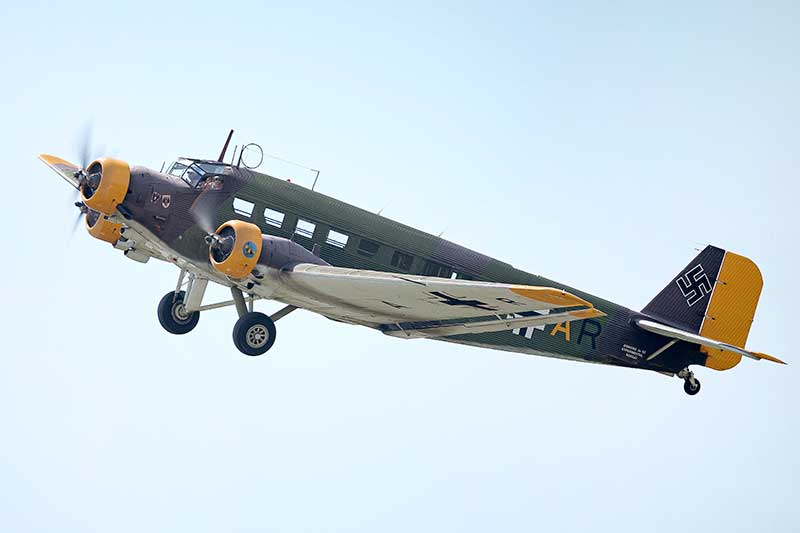
First flown in 1930, the tri-motor “Iron Annie” saw service in military and civilian airline roles. In her military role, she was used as a troop transport, cargo, bomber, and paratroop platform. The unusual duralumin skin and wing spars and the corrugation provided extra strength and stiffening of the structure.
The aircrafts light armament and low speed made it vulnerable to fighter attack, and losses grew dramatically as the war progressed. MAM’s Ju 52 was built by Spain in 1950. It carries the markings of the early war campaign in Crete. The crests on the nose are the coats of arms of the cities of Brandenburg and Hapsburg.
Only seven Ju 52’s remain flyable, and the MAM’s example is the only one flying in North America.
Country: Germany
Manufacturer: Junkers, CASA, Avions Amiat
Engine:BMW 132T (Patt & Whitney)
Horsepower: 715hp
Max Speed: 132 mph
Weight: 24,200 lbs
Ceiling: 18,000 feet
Wing Span: 95′ 10″Length: 62′
Crew: Three -
PBY-5A “Catalina”
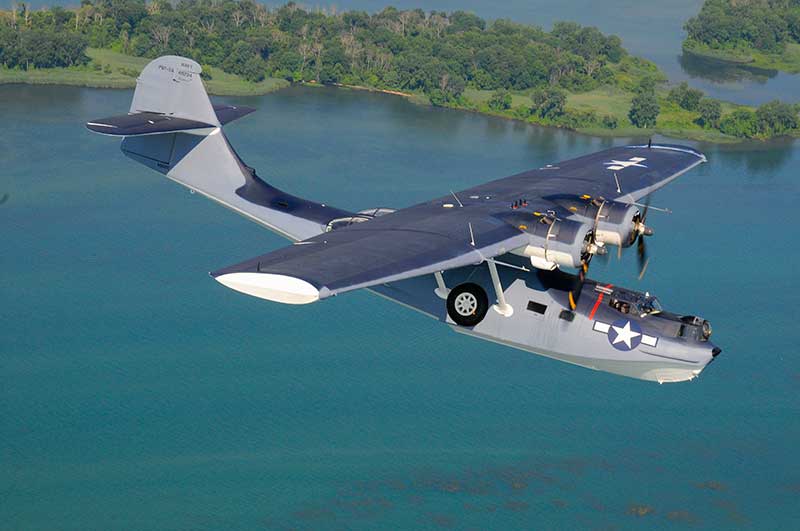
The Catalina was an American flying boat of 1930’s design that was one of the most widely used, multi-role, designs of the war. It served in military branches as an observation, night attack, maritime patrol, bomber, air-sea rescue, and anti-submarine aircraft.
The Catalina’s outstanding range and endurance made her the key element in the destruction of the German battleship Bismarck and the Japanese fleet at the Battle of Midway, where a Catalina also rescued the sole survivor of Torpedo Squadron Eight, Ensign George Gay.
MAM’s “Cat” was accepted in October of 1943, and had an extensive career that took her to San Diego, Norfolk, French Morocco, Canary Islands, Gibraltar, and the Azores, but her civilian career was far more interesting.
Country: USA
Manufacturer: Consolidated Vultee Aircraft Co.
Engine: Two Pratt & Whitney 1830-92
Horsepower: 1,200 hp each
Max Speed: 196mph
Weight: 35,420 lbs
Ceiling: 16,000 feet
Range: 2,300 miles
Wing Span: 104′Length: 63′ 10″
Crew: 15

